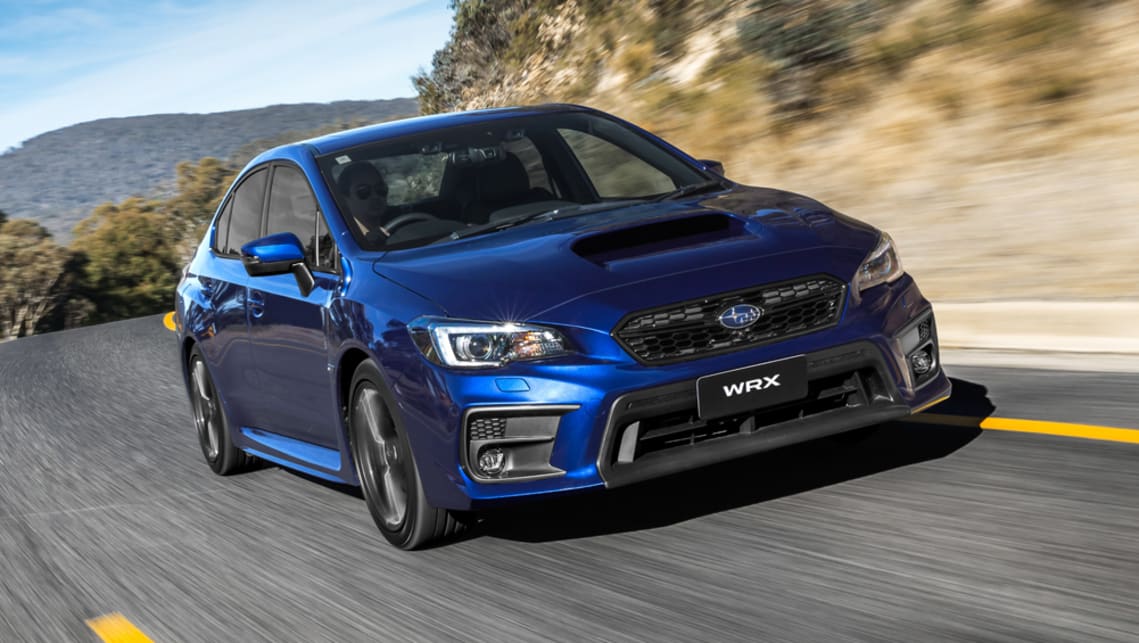Subaru Australia has introduced its heavily revised MY18 WRX and WRX STI line-ups, with price rises between $500 and $1700 impacting several variants.
Unaffected by any of the cost increases, the base WRX model, fitted with a six-speed manual gearbox, continues to kick off the range from $39,240, before on-road costs.
However, the WRX variant jumps in price by $1000 to $42,240 when paired with a CVT auto.
Furthermore, Premium versions of the manual and CVT WRX rise by $500 and $1700 to $45,640 and $48,840 respectively.
The manual-only WRX STI is $1150 dearer at $50,890, while the Premium counterpart retains its $55,640 sticker price.
Topping the line-up is the new WRX STI spec.R model, which checks in from $57,690, with its $2050 premium over the WRX STI Premium adding eight-way adjustable Recaro front seats.
The Japanese carmaker has lifted specification levels range-wide to compensate for the changes in cost, also updating exterior styling and improving mechanics.
Every WRX and WRX STI variant now includes adaptive LED headlights, LED daytime running lights (DRLs), a 5.9-inch multi-function display and roof carrier brackets.
All models within the WRX line-up add Jurid performance brake pads, red-painted brake calipers (front-only for CVT models), heated side mirrors and LED fog lights.
-
 2017 Subaru WRX
2017 Subaru WRX
-
 2017 Subaru WRX
2017 Subaru WRX
WRX variants fitted with a CVT benefit from the addition of Subaru’s ‘EyeSight’ driver assist system, as well as an electronic park brake with auto hold function.
The entry-level WRX model upgrades to dusk-sensing headlights and rain-sensing windscreen wipers, features previously reserved for the WRX Premium.
Alternatively, the WRX Premium range levels up to an eight-way adjustable driver’s seat with dual memory function and electric lumbar support, as well as heated front seats and a front-view camera.
When paired to a CVT, the WRX Premium also adds an EyeSight assist monitor, which projects warnings and status updates onto the lower section of the windscreen.
All variants in the WRX STI line-up now include yellow-painted Brembo brake calipers (six- and two-piston set-ups for the front and rear respectively) with cross-drilled brake discs, 19-inch alloy wheels and red seat belts.
The WRX STI model adds heated door mirrors, while the WRX STI Premium includes a front-view camera and an eight-way adjustable driver’s seat with electric lumbar support.
Available across several variants, the EyeSight suite of safety and driver assistance technologies can include AEB with pedestrian avoidance, forward collision warning, adaptive cruise control, stereo cameras, blind-spot monitoring, lane change assist, rear-cross traffic alert and high beam assist.
The iconic rear wing spoiler can be added to the WRX STI as a $300 option.
Exterior changes for all WRX and WRX STI variants are highlighted by the redesigned front bumper and grille, as well as a revised headlight cluster and new gun-metal grey alloy wheels.
Inside, upgrades are more subtle, with black finishes (high gloss in WRX STIs) for the door switch, centre instrument and gear shift surround panels, as well as the steering centre bezel. Door grips and the instrument panel have also been redesigned.
Additionally, the front and rear suspensions benefit from revisions to damping forces and coil springs constants, while the rear end also modifies the diameter of its swaybar.
There are no changes to either powertrain, meaning the WRX and WRX STI continue to employ turbocharged four-cylinder petrol engines with power sent to the road via Subaru’s symmetrical all-wheel-drive system.
The 2.0-litre unit in the WRX pumps out 197kW/350Nm, while the 2.5-litre engine under the WRX STI’s bonnet produces a meatier 221kW/407Nm.
Has Subaru done enough to keep its WRX and WRX STI fresh against its rivals? Tell us what you think in the comments below.


















Comments